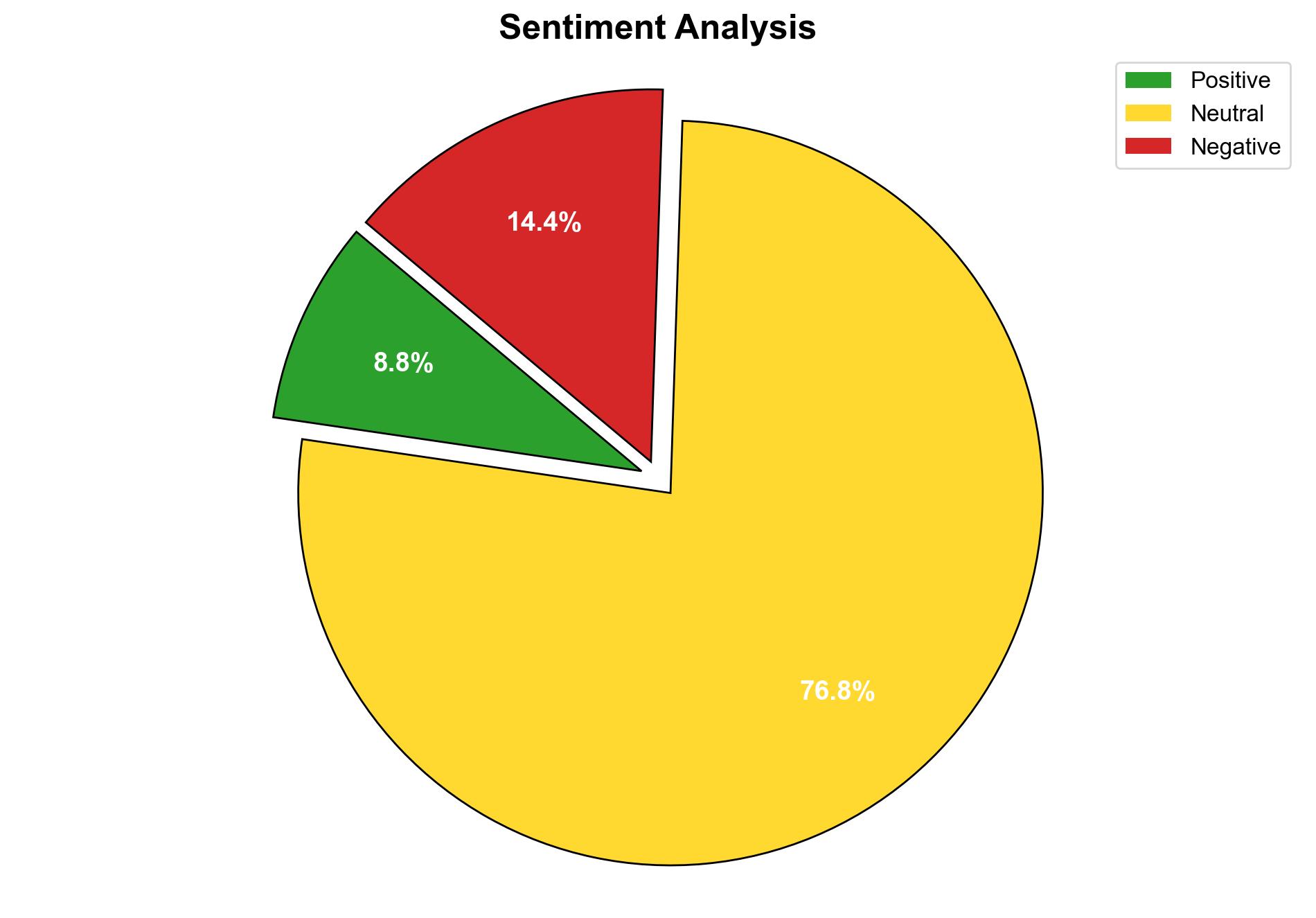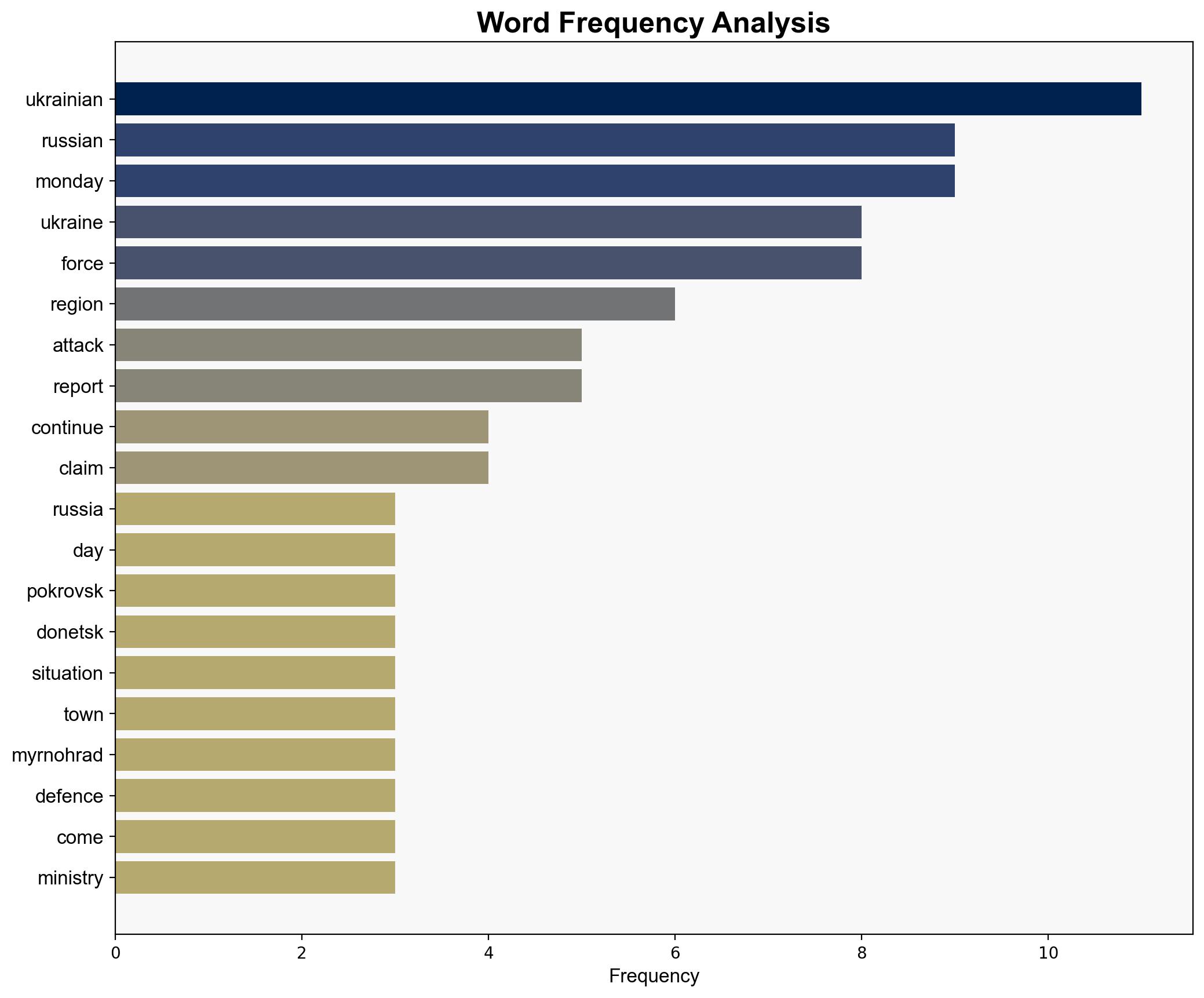Russia-Ukraine war List of key events day 1356 – Al Jazeera English
Published on: 2025-11-11
AI-powered OSINT brief from verified open sources. Automated NLP signal extraction with human verification. See our Methodology and Why WorldWideWatchers.
Intelligence Report: Russia-Ukraine war List of key events day 1356 – Al Jazeera English
1. BLUF (Bottom Line Up Front)
With a moderate confidence level, the most supported hypothesis is that Russia is intensifying its military efforts in the Donetsk and Zaporizhia regions to consolidate territorial gains before winter sets in, while Ukraine is facing significant logistical challenges but maintains resilience. Strategic recommendations include bolstering Ukraine’s logistical support and preparing for potential escalations in cyber and economic warfare.
2. Competing Hypotheses
Hypothesis 1: Russia is escalating its military operations in the Donetsk and Zaporizhia regions to solidify control over strategic areas before adverse weather conditions limit military maneuvers. This is supported by reports of Russian advances and claims of territorial gains.
Hypothesis 2: The reported Russian advances are exaggerated as part of a disinformation campaign to demoralize Ukrainian forces and influence international perceptions. Ukrainian forces’ claims of holding positions and replenishing supplies suggest resilience and possible exaggeration of Russian gains.
Assessment: Hypothesis 1 is more likely given the consistent pattern of Russian military strategy to secure key territories before winter. However, the possibility of disinformation cannot be entirely dismissed, necessitating further intelligence validation.
3. Key Assumptions and Red Flags
Assumptions include the belief that both sides are accurately reporting military engagements. Red flags include conflicting accounts of territorial control and the potential for both sides to engage in information warfare. The complexity of logistics in conflict zones may lead to biased reporting of supply chain effectiveness.
4. Implications and Strategic Risks
The intensification of fighting in strategic regions like Donetsk and Zaporizhia could lead to increased civilian casualties and infrastructure damage, exacerbating humanitarian crises. Economic impacts may include disruptions in energy supplies, affecting both local and broader European energy security. Cyber threats could escalate as both sides seek to undermine each other’s critical infrastructure and morale.
5. Recommendations and Outlook
- Enhance logistical support to Ukrainian forces to ensure continued resilience and operational effectiveness.
- Increase intelligence efforts to verify claims from both sides, reducing the impact of potential disinformation.
- Prepare for potential cyber and economic escalations by strengthening cybersecurity measures and diversifying energy sources.
- Best-case scenario: Diplomatic efforts lead to a ceasefire, stabilizing the region temporarily.
- Worst-case scenario: Full-scale escalation with significant territorial shifts and increased civilian impact.
- Most-likely scenario: Continued localized skirmishes with gradual territorial changes and persistent logistical challenges.
6. Key Individuals and Entities
Andriy Kovalev (Ukrainian military spokesperson), Svitlana Hrynchuk (Ukrainian Minister of Energy), Volodymyr Zelenskyy (Ukrainian President), Diana Loginova (detained street musician).
7. Thematic Tags
Regional Focus: Eastern Europe, Military Strategy, Energy Security, Information Warfare
Structured Analytic Techniques Applied
- Causal Layered Analysis (CLA): Analyze events across surface happenings, systems, worldviews, and myths.
- Cross-Impact Simulation: Model ripple effects across neighboring states, conflicts, or economic dependencies.
- Scenario Generation: Explore divergent futures under varying assumptions to identify plausible paths.
Explore more:
Regional Focus Briefs ·
Daily Summary ·
Methodology





